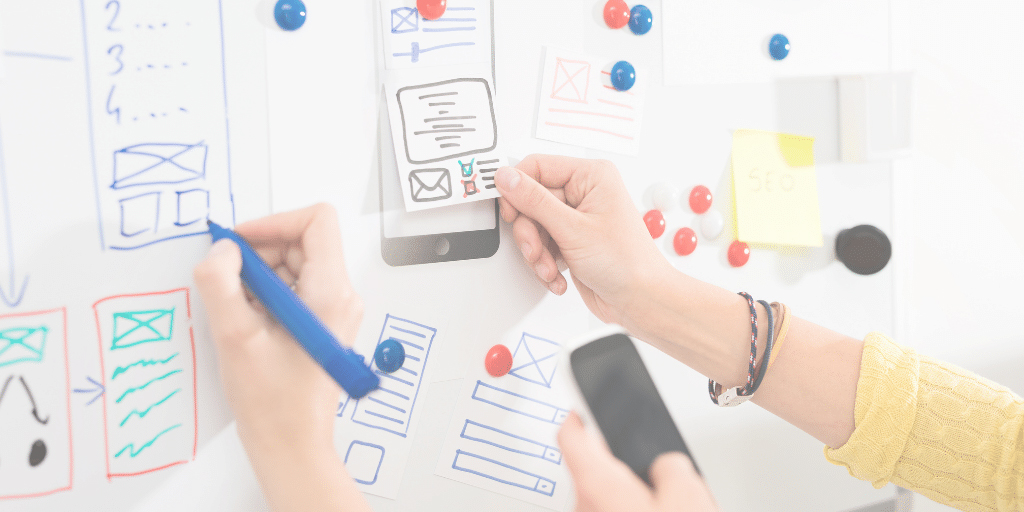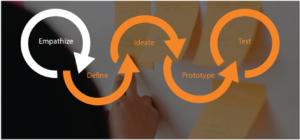The design world is vast and full of similar, related – but different – terms. Design Thinking and User Experience (UX) are part of the world of human-centred design, but it’s not always clear how they work together and separately. This blog will discuss UX and design thinking and where UX can occur within the design process.
Design is all around us – from shopping malls to coffee makers and smartphones. Humans have designed everything that we interact with. A UX designer sees a product or service and asks themselves questions like:
- Why is someone using this?
- What function is this product serving/performing for the user?
- How are they using it?
UX can span multiple disciplines, including graphic design, psychology, marketing, and computer science. These lenses help a UX designer answer human-centric questions to design useful products and services.
Design thinking is a solutions-based approach to solving various problems when solutions may not be inherently obvious or when parameters are ill-defined. The methodology begins by empathizing with users and understanding their perspectives through research, interviews, and other data. With this thorough understanding of the user, you can define (or redefine) the problem you are looking to solve, allowing you to ideate on possible solutions. It examines and analyses current user experiences to help determine customers’ problems and then looks to prototype and test solutions with users.
UX joins the design thinking process when the solution is already identified, and designers are poised to complete the user experience. In organizations, UX teams exist to optimize user experience within the whole system or service involving the product itself, branding, and usability and touches on the user’s experience before purchase and after also after purchase.
An Example
Let’s examine Nespresso coffee as an example of a user experience done well. When you walk into a brick and mortar Nespresso store, the employees greet you and explain how the Nespresso system works – how to use the machine and how to purchase and recycle coffee pods.
After purchase, the customer knows to go online to buy more coffee pods when they run out and understands how to mail the pods back to have them recycled. Staff also provide the same information online for customers to view for themselves.
The Nespresso user experience begins before the purchase, continues through ownership of the machine, and supports the buyer indefinitely – online and in-store.
Before creating this experience, Nespresso likely looked at the at-home coffee experience as a whole and what the associated challenges could have been. Using design thinking, Nespresso probably used personas to understand the behaviours and needs of what pod-coffee machine users really wanted: a sustainable way to enjoy a high-quality cup of coffee made by a barista just for them. Prototyping may have involved testing coffee blends, iterations of the machine itself, and testing the in-store experience with different user groups to see what resonated best with potential coffee machine buyers.
Wrapping Up
In conclusion, UX is a component within the design thinking process that zeroes in on user feelings and actions while using the product, service, or solution.
UX does not identify the user’s true problem but is used to make the experience as simple and elegant as possible – making it a joy to use. UX designers use many of the same tools used in the design thinking process and within human-centered design more broadly – tools like personas, journey maps, and wireframe prototypes.

